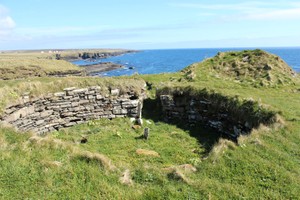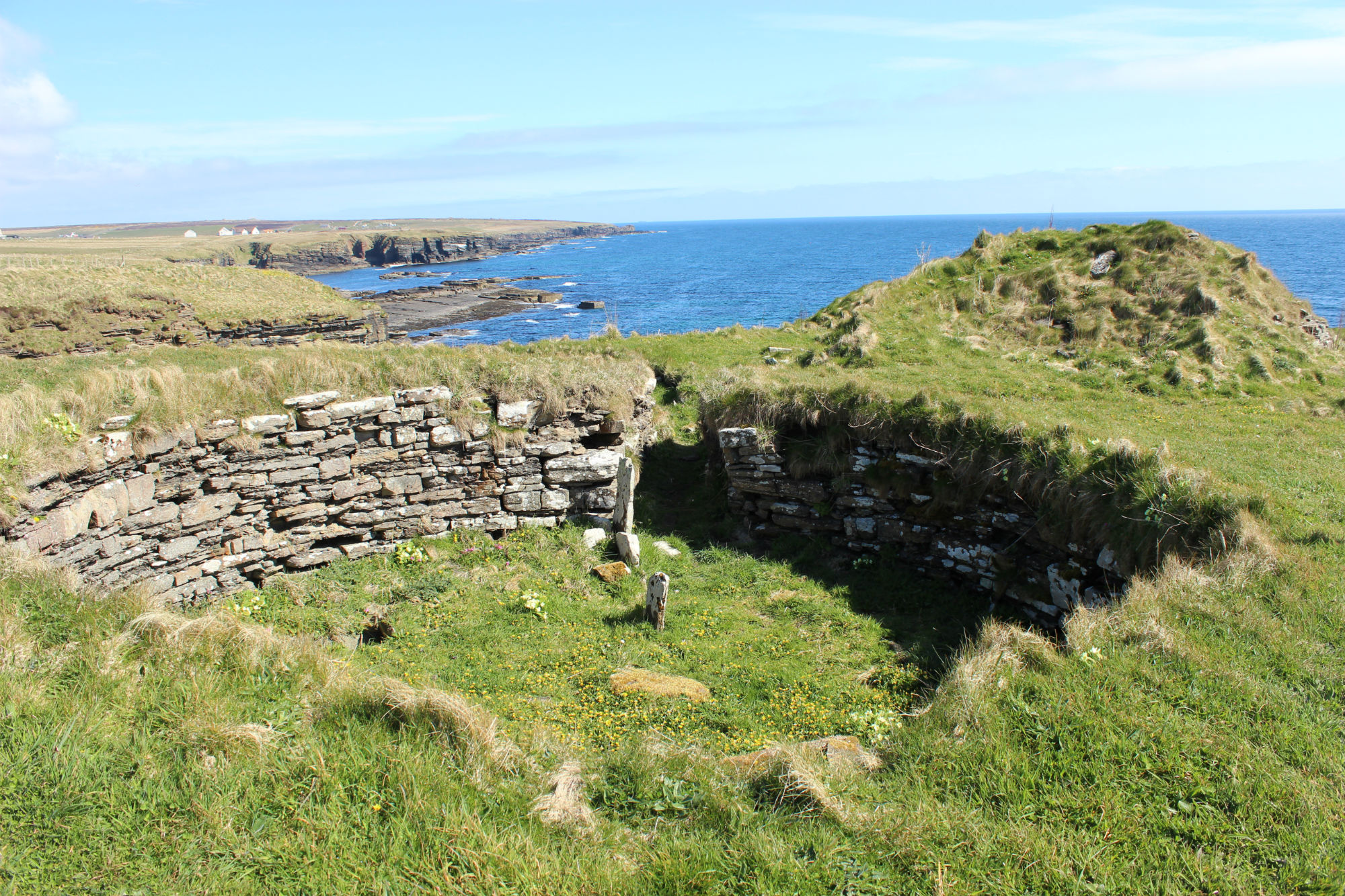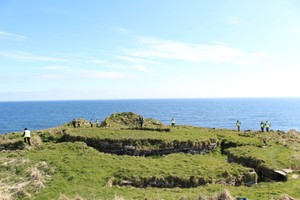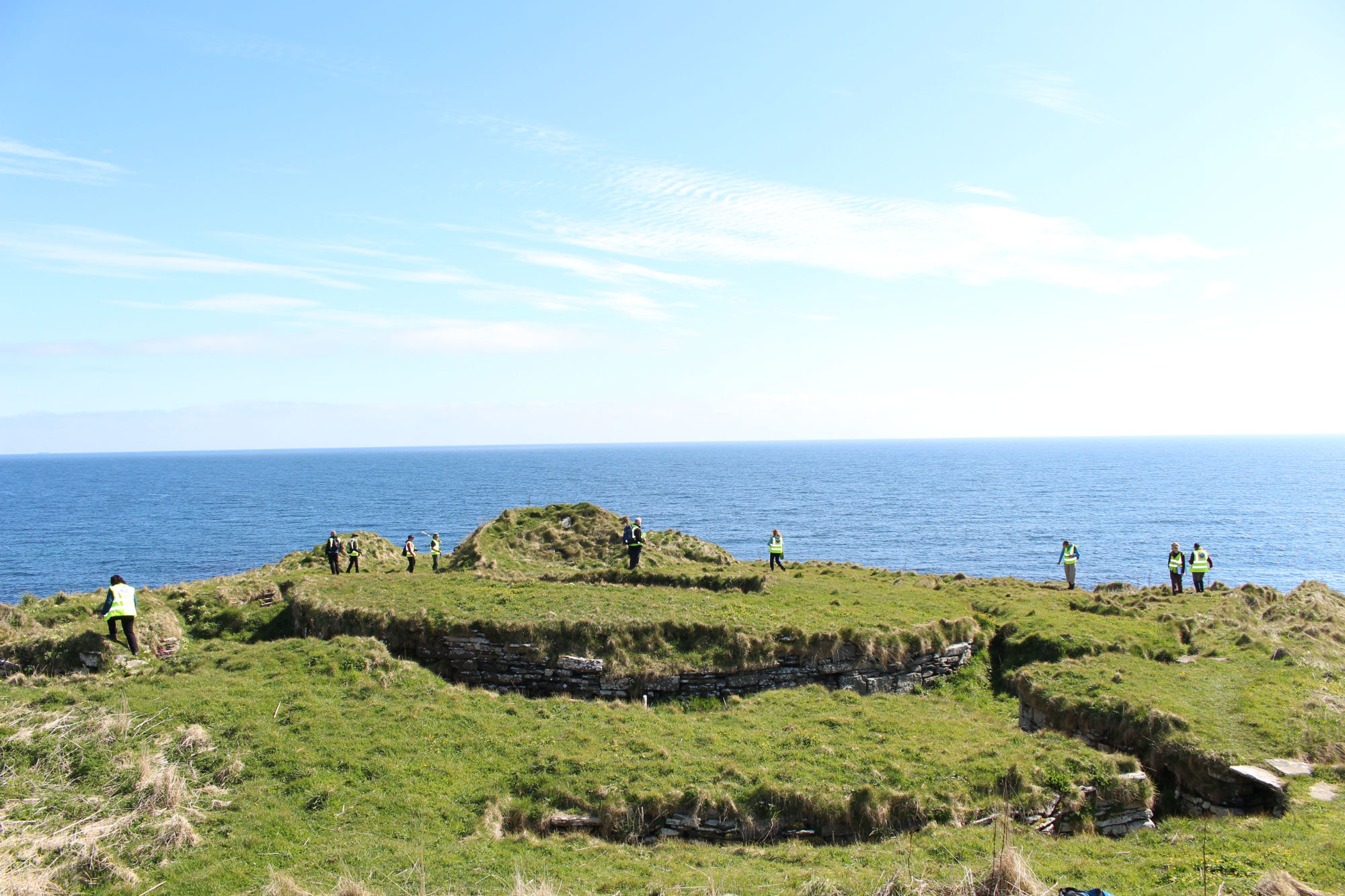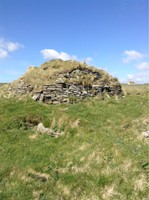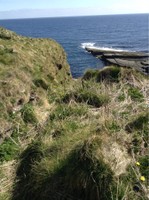| Tidal state |
Low |
| Site located? |
Yes |
| Proximity to coast edge |
Coast edge |
| Coastally eroding? |
has eroded in the past |
| Threats |
vegetation growth; visitor erosion |
| Visibility above ground |
Highly visible (substantial remains) |
| Access |
easily accessible - no restrictions; accessible on foot (footpath) |
| Local knowledge |
is well known; has local associations/history |
| Description |
Nybster broch, sitting on a high, narrow promontory above the sea is one of the most impressive brochs in Caithness. It is surrounded by buildings, some of which have now tumbled over the edge of the cliff.
Nybster Broch was excavated by Sir Francis Tress Barry about 1900, revealing neither guard chamber nor mural cells. It has in internal diameter of 23ft and a wall thickness of 14ft. In 1910 the max height of the walls was 5ft 3ins. The broch is defended by a possibly later forework and the whole is fronted by a ditch about 20ft wide which cuts off the promontory on which the broch stands. To seaward of the broch practically the whole promontory is covered by well-built out-buildings, oblong, circular, and irregular in plan. Finds include a fragment of 2nd century Samian ware, as well as the more usual bone and stone objects.
Nybster Broch is as described and planned above. Although there is no trace of a ditch cutting off promontory, there are remains of secondary defensive banks and walls, probably contemporary with the broch forework. A modern monument to Sir Francis Tress Barry has been constructed immediately E of the broch, destroying several outbuildings. Two mounds at seaward end of the promontory are probably excavation spoil heaps.
A site of major significance in study of development of broch in that it comprises the ground-galleried block-house of a pre-broch promontory fort, a solid-based broch, and a post-broch settlement. The block-house, which displays broch-like features, including a passage checked for two doors, is probably to be dated not much before the first century BC if not within it.
Survey, laser scan and trial trenching 2004, 2005, 2011 by University of Nottingham, AOC and CAT. 2011 condition survey concluded there had been little recent change from 2004 but several key areas could be considered fragile and some elements were at risk from coastal erosion.
Survey visit 05/05/2017
As described. Site is well-interpreted with recent boards. The cliffs on either side of the promontory show signs of past erosion but currently appear to be essentially stable. A monument to Tress Barry (13499) now sits immediately to the west of the broch, relocated (in the 1980s) from its original site within the broch settlement. The stone base of the first monument stands in its original position on the broch. |
|
